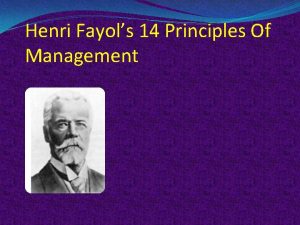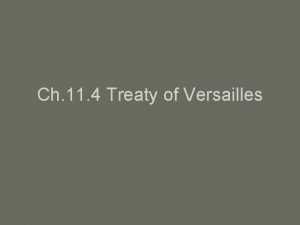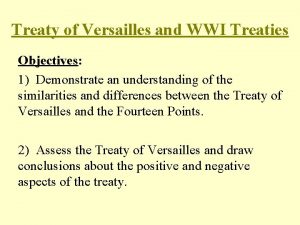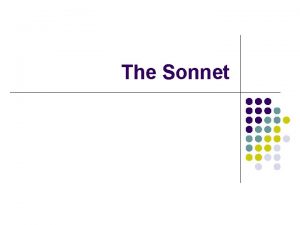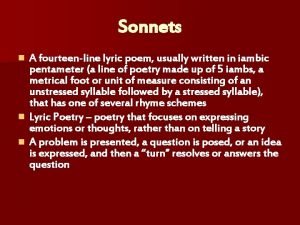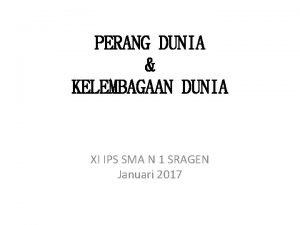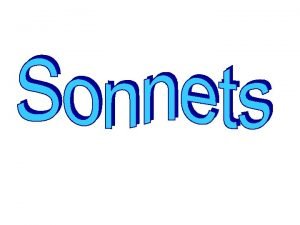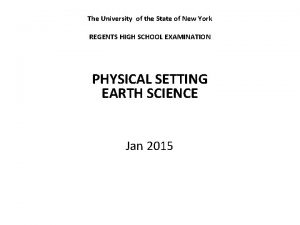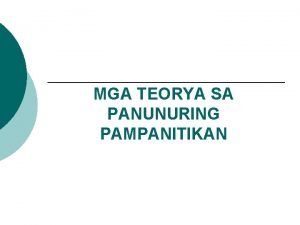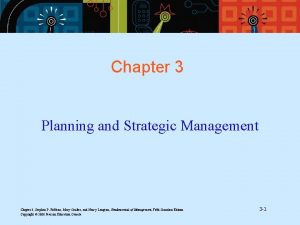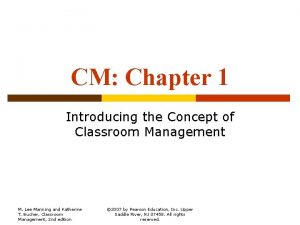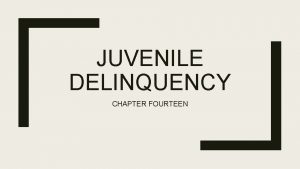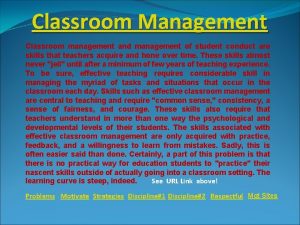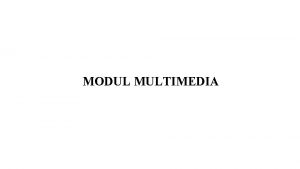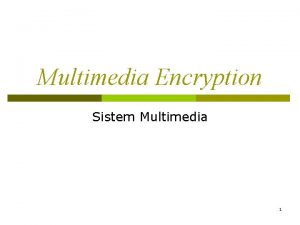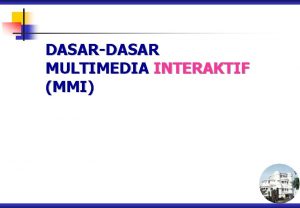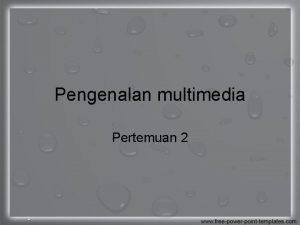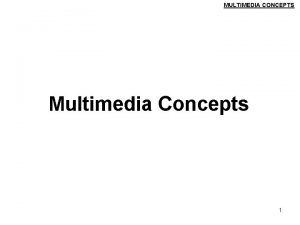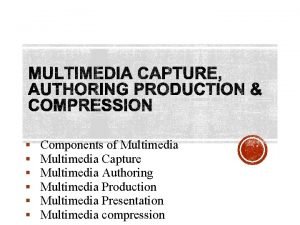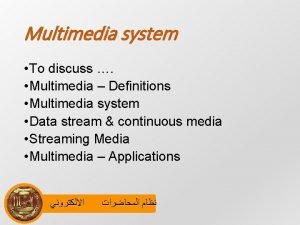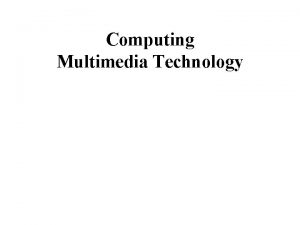Chapter Fourteen Classroom Organization and Management This multimedia




























- Slides: 28

Chapter Fourteen Classroom Organization and Management This multimedia product and its contents are protected under copyright law. The following are prohibited by law: • any public performance or display, including transmission of any image over a network; • preparation of any derivative work, including the extraction, in whole or in part, of any images; • any rental, lease, or lending of the program. (c) Allyn & Bacon 2004

Introduction Ø Ø Ø A teacher’s ability to manage his or her classroom can greatly enhance the quality of the education for all students, including those with special needs. Organizational and management dimensions are typically deemphasized in teacher education programs. Classroom management is the area that firstyear teachers consistently identify as most problematic for them. (c) Allyn & Bacon 2004

Classroom management is a systematic structuring of the classroom environment to create conditions in which effective teaching and learning can occur. (c) Allyn & Bacon 2004

Model of Classroom Management (Dole, 1996) n n n Multidimensionality Simultaneity Immediacy Unpredictability Publicness History (c) Allyn & Bacon 2004

Guiding Principles Ø Ø Ø All students must be valued. Meaningful relationships between teachers and students need to be developed and cultivated. Successful management derives from a positive classroom environment. Good classroom organization and management must be planned ahead of time. Affording students choices contributes to effective classroom dynamics. (c) Allyn & Bacon 2004

Guiding Principles Ø Ø Teachers and students in effective classrooms are considerate of individual differences. Proactive management is preferable to reactive approaches. Consistency is the key to an effective management program. Two characteristics enhance a teacher’s ability to manage a classroom: Ø With-it-ness Ø Overlap (c) Allyn & Bacon 2004

Dimensions of Classroom Management & Organization CLASSROOM MANAGEMENT Psychosocial Dimension Physical Dimension Procedural Dimension Instructional Dimension Behavior Dimension (c) Allyn & Bacon 2004 Organizational Dimension

Psychosocial Dimension v v v Refers to the psychological and social dynamics of the classroom. Focus is on classroom climate, the atmosphere in which students must function Psychosocial management is influenced by v v Student factors Teacher factors Peer factors Family factors (c) Allyn & Bacon 2004

Procedural Dimension Ø Refers to the rules and procedures that are part of the operating program of a classroom. Ø Ø Ø Rules should be identified and taught during the early days in the first of the year. Immediate and consistent consequences for rule violation are essential. Teachers need to develop logical classroom procedures - the specific ways in which certain activities will performed or the way certain situations will be handled. (c) Allyn & Bacon 2004

Physical Dimension Ø Ø Ø Includes the aspects of the physical environment that teachers can manipulate to enhance the conditions for learning. Classroom arrangements refer to physical facets of the classroom including layout, storage, wall space, and signage. The issues of accessibility warrants special attention because of legal mandates, such as Section 504 Ø Ø Accessibility extends beyond physical accessibility, and also includes program accessibility. Specialized equipment (e. g. , adaptive desks, wheelchairs) for students with disabilities is another area of concern. (c) Allyn & Bacon 2004

Behavioral Dimensions: Major Areas of Concern Ø Ø Ø Creating and Increasing Desirable Behaviors Decreasing Undesirable Behaviors Generalization and Maintenance Self-Management Behavior Intervention Plans (c) Allyn & Bacon 2004

Behavioral Dimension: Areas of Possible Emphasis When Developing Behavioral Programs (Etscheidt & Barlett, 1999) Ø Ø Ø Skill Training Behavior Management Plan Self-Management Peer Support Classwide Systems (c) Allyn & Bacon 2004

Creating and Increasing Desirable Behaviors Ø Ø Definition of reinforcer - any event that rewards and thus strengthens, the behavior it follows Positive reinforcers - present a desirable consequence for performance of an appropriate behavior Ø Ø Ø Praise Physical contact Tangible items Activities Privileges (c) Allyn & Bacon 2004

Positive Reinforcement: Basic Principles Ø Ø Ø The reinforcer must be meaningful to the student. The reinforcer must be contingent upon the proper performance of a desired behavior. The reinforcer must be presented immediately. (c) Allyn & Bacon 2004

Contingency Contracting Ø Contracts should state: Ø Ø Ø What behaviors students are to complete or perform What consequences (reinforcement) the instructor will provide To be effective, contracts should: Ø Ø Initially reward imperfect approximations of the behavior Provide frequent reinforcement Reward accomplishments rather than obedience Be fair, clear, and positive (c) Allyn & Bacon 2004

Types of Group Contingencies Ø Dependent Contingencies Ø Ø Interdependent Contingencies Ø Ø All group members share in the reinforcement if one individual achieves a goal All group members are reinforced if all collectively (or individually) achieve the stated goal Independent Contingencies Ø Individuals within the group are reinforced for individual achievement toward a goal (c) Allyn & Bacon 2004

Decreasing Undesirable Behavior Ø Natural consequences should be provided when the situation itself provides the contingencies for a certain behavior. Ø Ø Example: Student forgets permission slip for a field trip and is not allowed to go on the field trip. Logical consequences occur when there is a logical connection between inappropriate behavior and the consequences that follow. Ø Example: Student forgets lunch money and has to borrow money in order to eat. (c) Allyn & Bacon 2004

Positive Behavior Support Ø Ø Positive behavior support involves the assessment and reengineering of environments so people with problem behaviors experience reductions in these behaviors and increase the personal quality of their lives (Horner, 2000). Emphasizes changing the environment rather than just focusing on changing the behavior of individuals (c) Allyn & Bacon 2004

Differential Reinforcement of Lower Rates of Behavior (DRL) Ø Ø Ø Uses positive reinforcement strategies as a behavior reduction tool Teacher provides appropriate reinforcement to students for displaying lower rates of a certain behavior that has been targeted for reduction Example: Good Behavior Game (c) Allyn & Bacon 2004

Extinction Procedures Ø Definition: Teacher withholds reinforcement for a behavior Ø Ø Example: Teacher ignores misbehavior Suggestions Ø Ø Ø Analyze what is reinforcing the undesirable behavior Understand that extinction is desirable because it does not involve punishment, but will take time to be effective Do not use with behaviors that require immediate intervention Recognize that withholding reinforcement is likely to result in an increase in undesirable behavior and may produce an aggressive response Provide reinforcements to students who demonstrate appropriate incompatible behaviors (c) Allyn & Bacon 2004

Benign Tactics (Cummings, 1983) Ø Ø Law of Least Intervention - eliminate disruptive behaviors quickly with a minimum of disruption to the classroom or instructional routine Examples include: Ø Ø Position yourself physically near students who are likely to create problems. Establish eye contact and maintain it with a student who is behaving inappropriately. Stop talking for a noticeable length of time to redirect student attention. Use humor to redirect inappropriate behavior. (c) Allyn & Bacon 2004

Punishment is the presentation or the removal or something pleasant as a consequence for the performance of an undesirable behavior . Ø Examples: Ø Ø Reprimands Time Out Response Cost Punishment is the least preferable option and use of these strategies should be done sparingly and with careful consideration. (c) Allyn & Bacon 2004

Generalization and Maintenance Ø Ø Once behaviors have been established at acceptable levels, the next stages involve transferring what has been learned to new contexts (i. e. , generalization) and maintaining established levels of performance (i. e. , maintenance). Teachers need to program for both generalization and maintenance. (c) Allyn & Bacon 2004

Self-Management n n n Special attention needs to be given to students who do not display independent behavioral control. Self-regulated strategies are interventions that, though initially targeted by the teacher, are intended to be implemented independently by the student. Self-regulated strategies are an outgrowth of cognitive behavior modification, which combines cognitive strategies with behavioral techniques. (c) Allyn & Bacon 2004

Components of Self-Management Ø Self-Regulation Ø Self-Evaluation Ø Self-Reinforcement Ø Self-Instruction (c) Allyn & Bacon 2004

Behavior Intervention Plans Ø Ø Behavior intervention plans are mandated by the IDEA for students with disabilities who display seriously disruptive behaviors. Behavior intervention plans reflect a proactive response to these disruptive behaviors. This in contrast to traditional reactive approaches such as suspension/expulsion. (c) Allyn & Bacon 2004

Instructional Dimension Ø Ø Refers to certain aspects of instruction that are closely related to sound organizational and management practices. These management practices include: Ø Ø Ø Scheduling Transitions Grouping Lesson Planning Technology (c) Allyn & Bacon 2004

Organizational Dimension Ø Refers to time management strategies related to: Ø Ø Ø Personal Interactions The Work Environment Administrative Duties Instructional Applications Personal Applications (c) Allyn & Bacon 2004
 Henry fayol principle of management
Henry fayol principle of management Multimedia definition
Multimedia definition Sourima mal
Sourima mal Wilson's fourteen points and the treaty of versailles
Wilson's fourteen points and the treaty of versailles Fourteen points and treaty of versailles similarities
Fourteen points and treaty of versailles similarities Multimedia becomes interactive multimedia when
Multimedia becomes interactive multimedia when Csc253 interactive multimedia
Csc253 interactive multimedia Esa multimedia.esa.int./multimedia/virtual-tour-iss
Esa multimedia.esa.int./multimedia/virtual-tour-iss Classroom management elements
Classroom management elements Block arrangement compare and contrast
Block arrangement compare and contrast Poem generator sonnet
Poem generator sonnet A 14 line lyric poem is called
A 14 line lyric poem is called One two three four five six to hundred
One two three four five six to hundred Perang dunia dan kelembagaan dunia
Perang dunia dan kelembagaan dunia It is the star to every wand'ring bark
It is the star to every wand'ring bark Fourteen billion years represents the approximate age of
Fourteen billion years represents the approximate age of What is poetry in literature
What is poetry in literature Siya ang may akda ng fourteen points
Siya ang may akda ng fourteen points Fourteen line lyric poem
Fourteen line lyric poem A 14 line lyric poem
A 14 line lyric poem Siya ang may akda ng fourteen points
Siya ang may akda ng fourteen points A lyric poem of 14 lines
A lyric poem of 14 lines Teoryang saykolohikal
Teoryang saykolohikal Fourteen one act play summary
Fourteen one act play summary Crosby quality is free
Crosby quality is free Space bar
Space bar Chapter 3 strategic management
Chapter 3 strategic management Process organization in computer organization
Process organization in computer organization Johnson and johnson three c's of classroom management
Johnson and johnson three c's of classroom management
